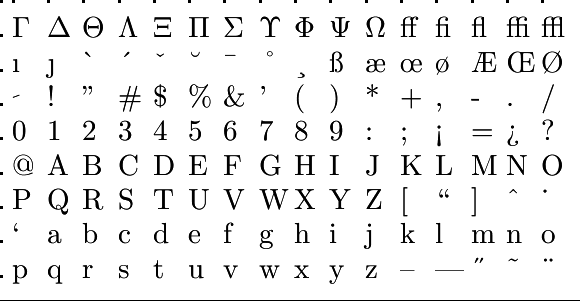We can use a calculator to calculate a logarithm. Usually the calculator has a button 'log' for #\log_{10}(x)# and a button 'ln' for the natural logarithm #\log_{\ee}(x)#, where #\ee\approx2.71828#, Euler's number. Therefore it is important to know the rule that helps to transform a logarithm from one base to another.
Let #x#, #a#, and #b# be positive numbers with #a\ne1# and #b\ne1#. Then the following equality holds.
\[\log_a(x) =\dfrac{\log_b(x)}{\log_b(a)}\]
We can also write this rule as:
\[\log_a(x) \cdot \log_b(a)=\log_b(x)\]
But the formula as stated in the theorem shows that we can calculate #\log_a(x)# if we know the values of two logarithms to base #b#.
To prove the theorem, we use the rule #a^{x \cdot y}=\left(a^x\right)^y# for powers and the fact that the function #b^x# is injective. This means that if #b^x=b^y#, then #x=y#.
From \[\begin{array}{rcl}b^{\log_b(a)\log_a(x)}&=&\left(b^{\log_b(a)}\right)^{\log_a(x)}\\&& \phantom{xxxxx}\color{blue}{\text{rule of calculation } a^{x \cdot z}=\left(a^x\right)^z}\\&=&a^{\log_a(x)}\\&& \phantom{xxxxx}\color{blue}{\text{rule for logarithms } g^{\log_g(z)}=z}\\&=&x\\&& \phantom{xxxxx}\color{blue}{\text{rule for logarithms } g^{\log_g(z)}=z}\\&=&b^{\log_b(x)}\\&& \phantom{xxxxx}\color{blue}{\text{rule for logarithms}g^{\log_g(z)}=z}\end{array}\] we derive \[b^{\log_b(a)\cdot \log_a(x)} = b^{\log_b(x)}\]
Since the function #b^x# of #x# is injective, we conclude #\log_b(a)\log_a(x)=\log_b(x)#.
The required equality follows after dividing the left and right-hand sides by #\log_b(a)#.
Thanks to this theorem we can approximate the value of every logarithm by using the 'log' button on a calculator.
Approximate #\log_{5}(57)# up to three decimal places.
#\log_{5}(57)\approx# #2.512#
After all,
\[\begin{array}{rcl}
\log_{5}(57)&=& \dfrac{\log_{10}(57)}{\log_{10}(5)} \\
&& \phantom{xxxxx}\color{blue}{\text{rule of calculation } \log_a(b)=\frac{\log_g(b)}{\log_g(a)}}\\
&\approx&\dfrac{1.756}{0.699} \\
&& \phantom{xxxxx}\color{blue}{\text{calculator used for logarithms base }10}\\
&\approx& 2.512 \\
&& \phantom{xxxxx}\color{blue}{\text{calculated and rounded to three decimals}}\\
\end{array}\]
Below we state some more useful rules of calculation for logarithms.
Let #x#, #y#, #a#, #b# be positive numbers. Assume furthermore #a\ne1# and #b\ne1#. Then the following equalities hold.
- #\log_a(1) = 0#
- #\log_a(x\cdot y) =\log_a(x)+\log_a(y)#
- #\log_a(\dfrac{1}{x}) =-\log_a(x)#
- #\log_a(\dfrac{x}{y}) =\log_a(x)-\log_a(y)#
- #\log_a(x^y) =y\log_a(x)#
- #\log_a(b) =\dfrac{1}{\log_b(a)}#
- #\log_{10}(1) = 0#
- #\log_2(28) = \log_2(4)+\log_2(7) =2+\log_2(7)#
- #\log_3(\dfrac{1}{27}) =-\log_3(27)=-3#
- #\log_4(\dfrac{17}{4}) =\log_4(17)-\log_4(4)=\log_4(17)-1#
- #\log_{10}(2^{19}) =19\log_{10}(2)#
- #\log_{25}(5) =\dfrac{1}{\log_5(25)}=\frac{1}{2}#
We will prove these statements one by one. Again we use the fundamental rules of the logarithm and the exponential function's injectivity.
1. #\log_a(1) = 0#. This follows from the rule #\log_a(a^x) = x# of The notion of logarithm: #\log_a(1)=\log_a(a^0) = 0#.
2. #\log_a(x\cdot y) =\log_a(x)+\log_a(y)#. From #a^{\log_a(x\cdot y)} =x\cdot y = a^{\log_a(x)} a^{\log_a(y)} = a^{\log_a(x)+\log_a(y)}# follows #a^{\log_a(x\cdot y)} =a^{\log_a(x)+\log_a(y)}#. Because the function #a^x# of #x# is injective, we conclude #{\log_a(x\cdot y)} ={\log_a(x)+\log_a(y)}#.
3. #\log_a(\dfrac{1}{x}) =-\log_a(x)#. From #\displaystyle a^{\log_a(\frac{1}{x})} =\frac{1}{x} = \frac{1}{a^{\log_a(x)}} =a^{-\log_a(x)}# follows #\displaystyle a^{\log_a(\frac{1}{x})} =a^{-\log_a(x)}#. Because the function #a^x# of #x# is injective, we conclude #\log_a(\dfrac{1}{x}) =-\log_a(x)#.
4. #\log_a(\dfrac{x}{y}) =\log_a(x)-\log_a(y)#. Using rule 2 we find #\displaystyle a^{\log_a(\frac{x}{y})} =\frac{x}{y} = \frac{a^{\log_a(x)}}{a^{\log_a(y)}} =a^{\log_a(x)}a^{-\log_a(y)}=a^{\log_a(x)-\log_a(y)}#, dus #\displaystyle a^{\log_a(\frac{x}{y})} =a^{\log_a(x)-\log_a(y)}#. Because the function #a^x# of #x# is injective, we conclude #\log_a(\dfrac{x}{y}) =\log_a(x)-\log_a(y)#.
5. #\log_a(x^y) =y\log_a(x)#. From #\displaystyle a^{\log_a(x^y)} =x^y= \left(a^{\log_a(x)}\right)^y =a^{\log_a(x)y}# follows #\displaystyle a^{\log_a(x^y)} =a^{y\log_a(x)}#. Because the function #a^x# of #x# is injective, we conclude #\log_a(x^y) =y\log_a(x)#.
6. #\log_a(b)=\dfrac{1}{\log_b(a)}#. The choice #x=b# in rule 6 gives #\log_a(b)=\dfrac{\log_b(b)}{\log_b(a)}#, and since #\log_b(b)=1# it follows that #\log_a(b)=\dfrac{1}{\log_b(a)}#.
Thanks to these rules, we can restrict the use of a calculator for approximations of #\log_{10}(x)# to #x# for which #1\lt x\le 2#:
- We know that #x\gt0# should hold for the logarithm at #x# to be defined. If #0\lt x\lt 1#, then we use rule 3 as follows: #\log_{10}(x)=-{\log_{10}(y)}# with #y=\frac{1}{x}#, so #y\gt 1#. This shows that we only need to look up approximations of logarithms #\log_{10}(x)# with #x\ge 1#.
- The case #x=1# is treated in the first rule: #\log_{10}(1)=0#. By now, we have reduced all cases to #x\gt1#.
- Finally, suppose #x\gt 2#. Then #y = \frac{x}{2}# is a number larger than #1# and smaller than #x-1#. According to rule 2 we also have #\log_{10}(x) = \log_{10}(2\cdot y)= \log_{10}(2)+ \log_{10}(y)#. Thus, we can also express #\log_{10}(x)# in terms of logarithms with smaller arguments that are larger than #1#. Even better: if we let #m# be the largest natural number such that #2^m\lt x#, then we find, just like above, #\log_{10}(x) = m\cdot \log_{10}(2)+\log_{10}\left(z\right)#, where #z=\frac{x}{2^m }# satisfies #1\lt z\le 2#.
In the examples below, a number of these rules are being put to use.
Simplify as much as possible.
#\log_3(729)+\log_3(27)=# #9#
Using rules of calculation #\log_a(x\cdot y) =\log_a(x)+\log_a(y)# and #\log_a(a^x)=x#, we find
\[ \log_3(729)+\log_3(27)=\log_3\left(729 \cdot {27}\right)=\log_3\left(3^{6}\cdot 3^{3}\right)=\log_3\left(3^9\right)=9\]
 Rules of calculation for logarithms
Rules of calculation for logarithms




